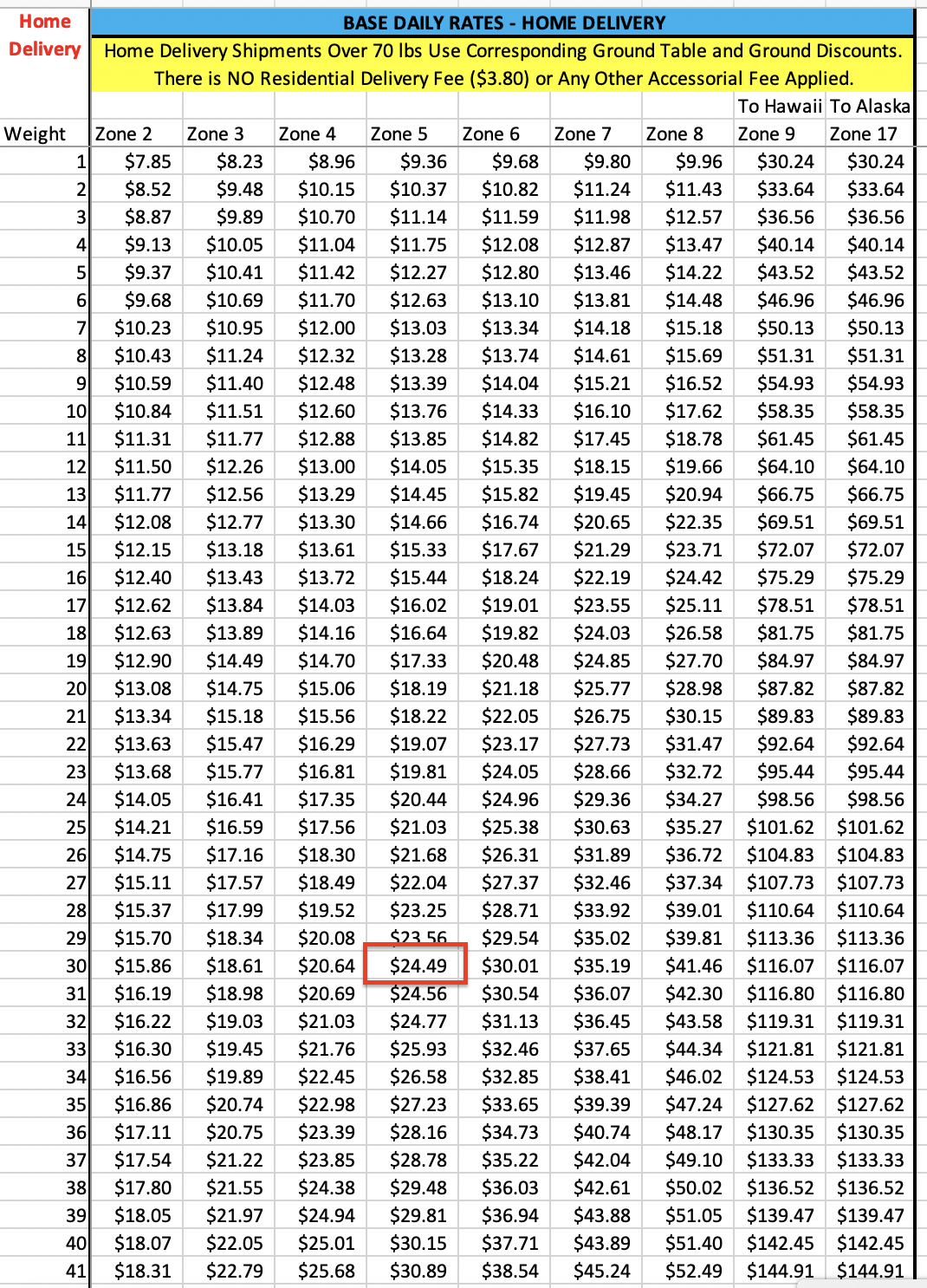How Do I Estimate The Base Shipping Cost for an Order?
Calculating shipping costs can be a little overwhelming at first. However, with the right tools, it’s much easier to quickly understand the estimated shipping cost for a particular order. For purposes of this example, we are going to use FedEx as the carrier. However, many of the same principles can be applied across carriers.
Shipping cost is based primarily on two factors:
- Distance: For distance, the further a package must travel, the more it costs. Most carriers segment the United States into Zones. The higher the zone number, the further away the destination and the more expensive.
- Weight (actual or dimensional). Carriers began taking dimensional weight into consideration to ensure they were not losing money on large packages with smaller or lightweight items. They will consider the actual weight and dimensional weight (more on how to calculate this below)
Lastly, while it is fairly simple to determine the base shipping cost of a particular package, there are also surcharges that may be applied to each package based on a variety of factors. For example, the most common is the Residential Delivery fee which will be charged if the package is being delivered to a residential address. There are additional surcharges that should also be considered that you can view here.
Now, let's get a quote!
- Determine the zone: To determine which zone you are shipping to you can use the FedEx “Find Zones” tool. All you need to know is which zip code you are shipping from and which zip code you are shipping to. If you are shipping from the Knoxville warehouse, the zip code is 37914. If you are shipping from the Salt Lake City warehouse, the code is 84116. If you were shipping from one of our warehouses to the other, you can see that it would be a Zone 7. *For International orders, you will want to use the Zone as referenced in the FedEx Service Guide.
- Determine the weight: The next step is understanding the weight of your product. While this seems pretty straightforward, it actually depends on the product you are shipping. Carriers will look at the actual weight as well as the dimensional weight of the product and determine which is more and use that number to set the weight of your package. Dimensional weight is based on the size of your package (how much space it takes up on a carrier’s truck). To determine the dimensional weight of your package you can use the dimensional calculator on our website. If your orders normally require several pieces to go in a single package and your box sizes vary, it will be important to have a good estimate of what box size will be for the order so you can determine the dimensional weight.
- Find your rate: Now that you know the zone and the package weight, you will use the shipping tables provided to you by your account manager to identify the service level (FedEx Ground, Overnight, SmartPost, etc.), the weight, and the zone to determine the base rate.
As an example, you can see in the image below that a 30 pound package going to Zone 5 would have a base rate of $24.49.


